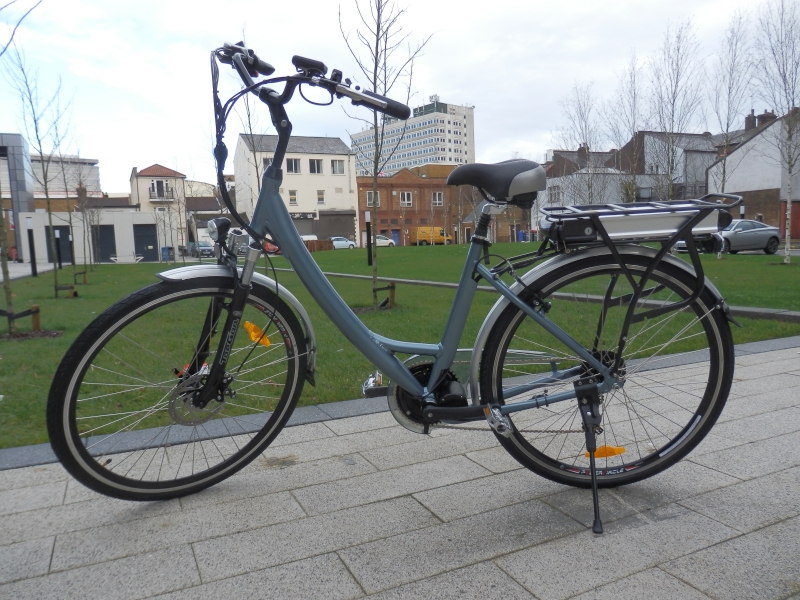Thanks d8veh.
I believe I start understanding, after playing around with the simulator:
The key is the black line (the load line). The point where the load line crosses with the power line (red), is the speed / power at which the bike can go up hill without pedalling.
The black line is basically independent from the motor. So, the torquier the motor, the faster the power will fall off at "high" speed, but the faster it will become reasonably high even at low speeds. The faster the motor, the opposite happens: the power curve remains relatively high even at high speeds, but at low speeds, it remains low.
Since a torquier motor will have a higher power curve even at low speeds, with a high grade uphill (steep black line), the intersection between the black and the red line will happen at a higher speed, which allows a higher climbing speed, as well as a higher efficiency and power.
With a faster motor, the intersection between the black and red line happens at lower speed, which implies a lower climbing speed, as well as a lower efficiency and power.
So, the ideal would be a extreme Xiongda (say 100rpm and 400rpm). Or maybe a 2WD extreme Xiongda.
Is that right, now?
I believe I start understanding, after playing around with the simulator:
The key is the black line (the load line). The point where the load line crosses with the power line (red), is the speed / power at which the bike can go up hill without pedalling.
The black line is basically independent from the motor. So, the torquier the motor, the faster the power will fall off at "high" speed, but the faster it will become reasonably high even at low speeds. The faster the motor, the opposite happens: the power curve remains relatively high even at high speeds, but at low speeds, it remains low.
Since a torquier motor will have a higher power curve even at low speeds, with a high grade uphill (steep black line), the intersection between the black and the red line will happen at a higher speed, which allows a higher climbing speed, as well as a higher efficiency and power.
With a faster motor, the intersection between the black and red line happens at lower speed, which implies a lower climbing speed, as well as a lower efficiency and power.
So, the ideal would be a extreme Xiongda (say 100rpm and 400rpm). Or maybe a 2WD extreme Xiongda.
Is that right, now?








